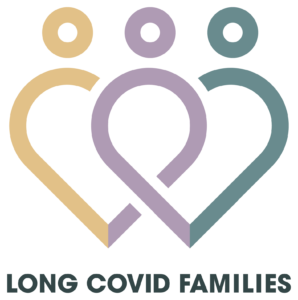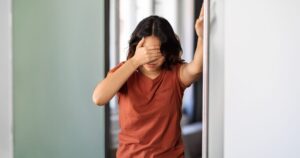
Searching for Real Answers for Kids with Long COVID
By the time Daniel was eleven, he had already tried three different medications. None of them helped. One left him too nauseated to eat. Another made it harder to sleep. A third seemed to do nothing at all. Each new prescription felt like another shot in the dark, draining his body and his family’s hope. What they needed were answers, not guesswork.
That is why September 9 and 10, 2025, were so important. The NIH held the second annual RECOVER-TLC (Treating Long COVID) Workshop. Long Covid Families participated alongside researchers, clinicians, and other community members as they weighed which options should move forward into trials—including several that could soon be tested in children.
At the workshop, several possible treatment paths were reviewed. Here are three that are being closely considered for children.
Low Dose Naltrexone
What it is: Low Dose Naltrexone is a medication that may help calm parts of the immune system that drive inflammation. By reducing this overactive response, it has the potential to ease symptoms like pain, fatigue, sleep problems, and brain fog.
Why it’s being considered: LDN works by blocking certain receptors on immune cells. When those receptors are blocked, the cells release fewer inflammatory signals. Researchers believe that this reduction in inflammation may help improve symptoms in people living with conditions such as Long COVID and ME/CFS.
What we already know about use in children: LDN has already been studied in small pediatric trials for conditions such as Crohn’s disease and chronic pain. It has also been prescribed off-label for certain behavioral and neurodevelopmental conditions. These studies suggest that LDN can be tolerated in children, with manageable side effects.
Why a trial is still needed: While early pediatric use of LDN is encouraging, it does not tell us enough about how the medication will work for children with long COVID. We still need answers on the right dose, long-term safety, and which symptoms might respond. In children, fatigue is the first focus because it is both common and takes such a big toll on their lives. A formal pediatric trial is essential, since only careful research can show whether LDN is truly safe and effective for children with this illness.
Possible side effects: Reported side effects include headaches, stomach upset, sleep problems, or mood changes. These are generally mild, but careful monitoring in a trial setting is essential.
Community interest: Families and patients have shown strong interest in LDN compared with other possible treatments for Long COVID. This attention from the community is one reason researchers are moving forward with a pediatric trial.
GLP-1 Medicines
What it is: They control blood sugar slow how quickly food leaves the stomach, and affect appetite. Some are already FDA-approved for children 12 and older with diabetes or obesity.
Why it’s being considered: Researchers believe GLP-1 medicines may reduce inflammation and improve how the body manages energy. Early reports from adults taking GLP-1s off-label for Long COVID also describe improvements in fatigue and brain fog.
What’s next: Researchers are considering clinical trials of GLP-1 drugs for Long COVID, with possible inclusion of children ages 12 and older.
Possible side effects: Common side effects include nausea, stomach upset, or changes in appetite. Rarely, patients may experience gallbladder problems, pancreatitis, or kidney issues.
Stellate Ganglion Block
What it is: Stellate Ganglion Block (SGB) is a procedure where doctors inject a local anesthetic into a bundle of nerves in the neck (the stellate ganglion). It is already used for pain conditions and PTSD, and sometimes to calm parts of the nervous system.
Why it’s being considered for Long COVID: Early studies in adults with Long COVID or ME/CFS suggest that SGB may help reduce symptoms such as fatigue, brain fog, orthostatic intolerance, and problems with heart rate or blood pressure. The idea is that by calming overactive sympathetic (“fight or flight”) nerve signaling, the body might reset toward better regulation, easing some of these symptoms.
What’s next: Researchers are considering clinical trials of SGB for Long COVID. There is interest in including children 12 and older in future studies.
Possible side effects: Temporary hoarseness, difficulty swallowing, or drooping eyelid have been reported following SGB. These usually resolve within hours, but more data are needed, especially in younger patients.
Why Pediatric Trials are Different
Children are not small adults. Their bodies are still growing and their immune systems are still developing. A drug that helps an adult may not work the same way in a child.
That is why pediatric trials need their own design. At the NIH RECOVER Treating Long COVID Workshop, we spoke on behalf of children and caregivers. We called on researchers to design trials that reflect the daily realities of families living with pediatric Long COVID. Our message was clear: unless studies are built around family needs, the science will leave kids behind.
Daniel’s story is not unique. Families everywhere are cycling through guesses while children lose time they cannot get back. That is why trials designed for kids, and policies that support them, matter so much. Without pediatric research, children with Long COVID will remain without real options, and they need them now. .




